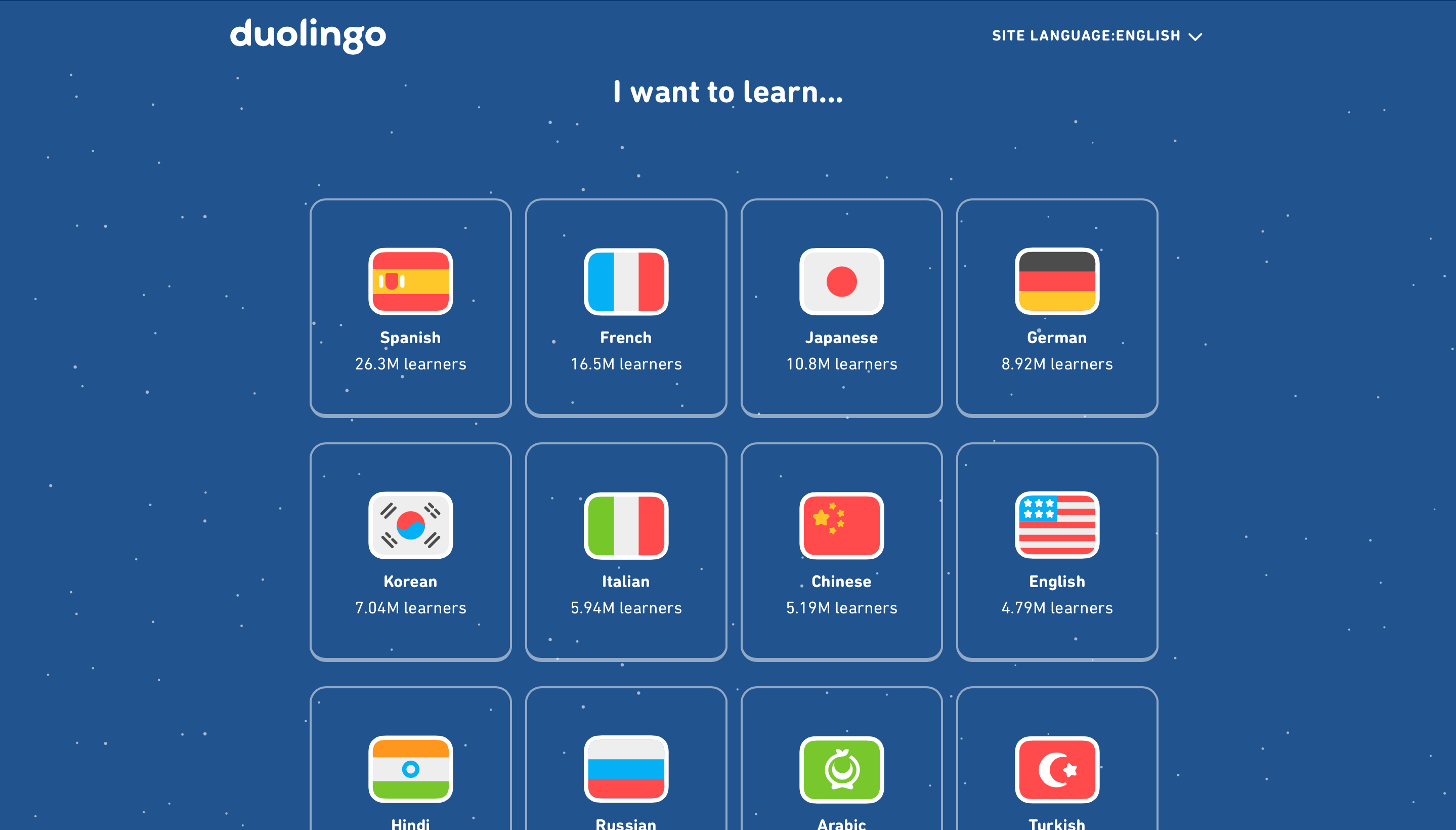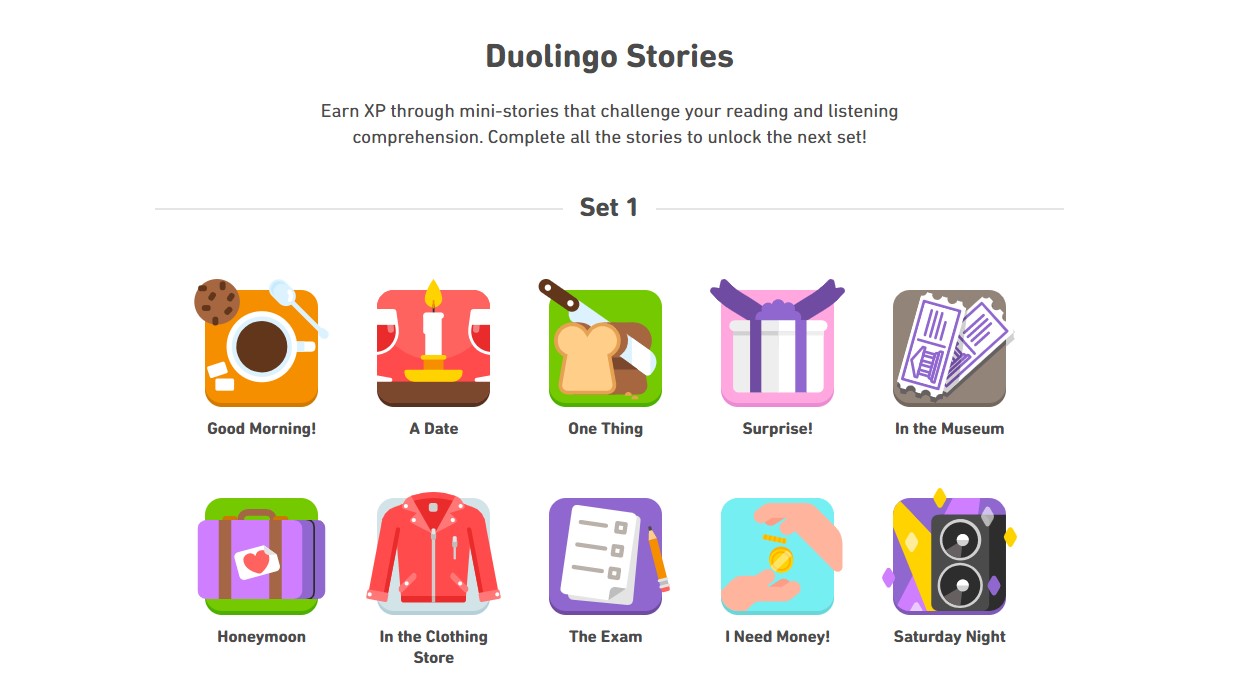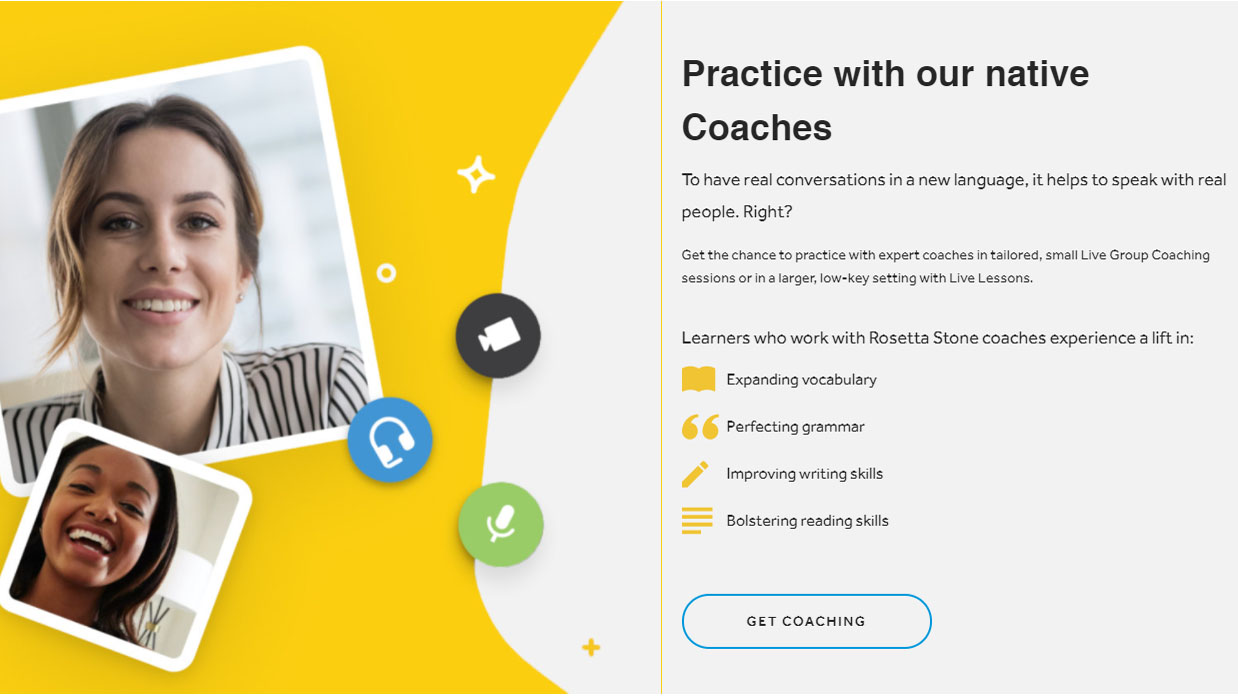Duolingo versus Rosetta Stone: Which one's right for you?
We compare Duolingo and Rosetta Stone, two of the world's biggest language-learning platforms.

Learning a new language can be beneficial for a number of reasons; it can help you to land your dream job abroad, meet new people and make the most of those foreign holidays. And the aim of both of Rosetta Stone and Duolingo platforms is to help you master a choice of tongues, from Hebrew to Hindi, Japanese to German, giving you the confidence to speak, write and listen in a range of everyday scenarios.
Founded in 2011 by University of Pittsburgh lecturer Luis von Ahn and one of his post-graduate students, Severin Hacker, Duolingo now has over 500 million registered users worldwide. Rosetta Stone – named after the ancient stone slab on which the Decree of Memphis is inscribed in three writing systems – was founded in 1992 by Virginian brothers Allen and Eugene Stoltzfus, along with Allen's brother-in-law John Fairfield. It currently has just over 500,000 subscribers.
Duolingo and Rosetta Stone both give their users the choice of accessing content via a desktop computer or a smart device, enabling them to keep up with their learning whether they're at work, at home or on the go. But which of these platforms is more likely to have you speaking fluently in your chosen language? Let's take a look...
Thinking of mastering a particular language? Read our guides on the best learn Spanish online courses and the best learn French online apps and websites to find the right course for you.
Duolingo versus Rosetta Stone: Ease of use
When you arrive at Duolingo as a new user, you're immediately asked what language you'd like to learn and why you want to learn it. Once you've made your selections, you're given the opportunity to set yourself reminders on social media, presented with a choice of daily goals – from casual (five minutes a day) up to intense (20 minutes a day) – and asked whether you're a beginner or have some prior knowledge. This will inform how far through the syllabus your lessons will begin.

So far, so easy. After that, though, things start to get a bit confusing as you're launched straight into a series of multiple-choice exercises. Don't get us wrong, the exercises themselves are very simple and engaging (more about that in the next section). It's just a bit disorientating being bombarded with random questions before you've even been presented with details of your course.
Once you get to the end of this initial burst, you finally land on your hub page. Now things start to make more sense, as you're given a structured plan of your different modules, informed of your progress and given the chance to invite friends from Facebook. There's also a menu bar where you can choose to access Duolingo Stories – mini-tales that challenge your reading and listening skills – along with the site's discussion boards and shop. Though some of the gamification concepts seemed a little childish to us – including 'Streak Freeze', 'Double or Nothing' and even a virtual currency – we generally found the site fun, friendly and easy to understand.
Sign up to receive the latest news, reviews, buying guides and deals direct to your inbox

Our introduction to Rosetta Stone wasn't too dissimilar to the Duolingo experience. Once we'd chosen the language we wanted to learn, selected our skill level and stated that we were an adult male (this is to help with voice recognition), we were again presented with a series of seemingly random exercises. However, whereas Duolingo's were at least straightforward, it took us a while to get our head around what we were supposed to do here. And it didn't help that navigating the site was rather slow and glitchy.
With Rosetta Stone, stating your reason for choosing a particular language informs how your course will pan out. So, if you say that you're learning French for travel reasons, your entire syllabus will be focused on travel-related phrases. Some people might like this more focused approach to learning, but we found it a little inhibiting.
We were also less enthusiastic about how our personal hub page was laid out on Rosetta Stone. Unlike Duolingo, our course path was not laid out on the main page (we had to click on a separate link for that). And, in place of clearly set-out menu options at the top of the screen, there's a solitary option to 'explore all content'. Selecting this leads to a page filled with materials that might help with your course: videos, phrasebooks, etc. It's all very useful but it's a lot to digest in one place. Yet another page takes you to the lessons plans, which we've screenshotted below.

Duolingo versus Rosetta Stone: Number of courses
Duolingo currently offers 40 different languages. All the popular ones are there – French, German, Spanish, etc – but there are also quite a few less obvious ones, including Yiddish, Ukrainian and Navajo. Brilliantly, you can even choose to learn cult TV languages such as High Valyrian (from Game of Thrones) and Klingon (from Star Trek). Under each language option, it states how many people are actively learning it.
With Rosetta Stone, you're given a choice of 23 languages. As with Duolingo, the really common ones are all represented; however, there are a few notable omissions here that feature on the Duolingo platform, including Finnish, Czech and Hungarian. There are also no novelty languages (sorry, Trekkies!).
Duolingo versus Rosetta Stone: Quality of courses
Duolingo's mission is to make its courses “so fun that people [will] prefer picking up new skills over playing a game”. And they certainly are fun, comprising a series of bite-size interactive exercises that cover reading, writing and listening. In one exercise, we were played an audio clip of someone saying a sentence in Spanish, before being presented with that sentence in writing, with one word missing – the idea being that we had to find the omitted word from the choice given to us. Another exercise saw the words in a Spanish sentence scrambled up, giving us the task of arranging them into the correct order.
While the games seem simple and engaging, Duolingo insists that they are based on “a methodology proven to foster long-term retention, and a curriculum aligned to an international standard”. That said, the company's CEO has previously stated that Duolingo can only elevate users to a level between advanced beginner and early intermediate, so if you're looking to become an expert then you might be disappointed.

One of the best things about university education is that students can benefit from support and collaboration. This is something that Duolingo has taken on board, complementing its lessons with things like in-person events and podcasts. Not only does this give users the opportunity to engage and empathize with like-minded linguists, it enables them to try out some of their new-found skills in a real-world scenario.
Duolingo no longer offers live tutoring, having discontinued this service in 2019. However, Rosetta Stone does still provide access to real-life, certified teachers – or at least it does if you opt for one of the more expensive 'Self-Study + Coaching' packages. This is a useful option to have if you lack confidence and need that extra level of support that human interaction can bring.

Though we didn't love the Rosetta Stone user experience (see the 'ease of use' section, above), we were left feeling that – if you persevere with it – this platform will make you more of an expert in your chosen language than Duolingo will. This is partly due to the aforementioned live tutoring, but also because the site features something called TruAccent. Rosetta Stone's proprietary speech engine will analyze the pronunciation of your words, compare it to that of native speakers, and then feed back to you whenever you make a mistake. It's a really clever piece of technology, and one that should enable you to lose that Texan twang when you're ordering a steak frites in Paris.
Rosetta Stone gives you the option to download your lessons, meaning you can carry on with your studying even when you don't have access to the internet. And the site also features something called an audio companion, which enables you to listen to your lessons – handy for those times when you fancy a screen break.
For those people who judge the quality of a business based on its high-profile endorsements, we should mention that Rosetta Stone claims that its platform is trusted by the likes of Twitter, BMW, Uber and LEGO.
Duolingo versus Rosetta Stone: Pricing
According to the Duolingo website, this learning platform was created “so that everyone could have a chance” at mastering a new language and gaining access to better opportunities in life. And sure enough, the vast majority of content is free. You'll only need to stump up cash if you want the Plus package, which gives you benefits like no ads, the ability to skip levels and personalized mistakes reviews. If those things matter to you, you can either choose to pay as you go ($9.99 per month) or subscribe to a 12-month plan, which costs $79.99 (or $6.67 per month). Want to sample the goods before making a commitment? Duolingo offers a free 14-day trial – though bear in mind that you'll need to give your card details and will be charged if you forget to cancel before the period elapses.
Rosetta Stone is a purely subscription-based platform, offering a selection of payment plans. There's no option to pay as you go; you can either choose a three-month membership (from $35.97), a year (from $170), two years (from $249) or a whole lifetime (from $299). The base prices here are for 'self-study' subscriptions – if you want to combine your self-study with sessions led by certified group coaches, expect to pay more. As with Duolingo, you can sample Rosetta Stone's content before you commit, though in this case the free trial only lasts for three days. For extra peace of mind, the platform offers a 30-day money-back guarantee.
Duolingo versus Rosetta Stone: Which is best?
Both of these platforms have their pros and cons. We would say that, overall, Duolingo offers a more fun and intuitive experience, providing the motivation to come back time and time again. This platform also offers a wider choice of languages, including novel options such as High Valyrian and Klingon. On the downside, it's been acknowledged that Duolingo's courses do not enable you to become a 'master' in your chosen language – which is fine if you're just looking to improve your skills in preparation for a holiday, but perhaps not as ideal for those who are moving to a new job in a foreign country.
As for Rosetta Stone, its lessons are more geared towards making you an expert – especially at speaking. However, we found the user experience to be a little slow and staid at times; the choice of languages is smaller, and it also doesn't offer a pay-as-you-go option like Duolingo does. It's worth mentioning that neither Duolingo nor Rosetta Stone offers universally recognized certification upon completion of its courses. If this is important to you, then you might want to check out the best online learning platforms, some of which offer accreditation.
Though Paul has been a freelance writer on Top Ten Reviews for just a short time, he’s racked up plenty of articles on some of Future’s most prestigious brands, including MusicRadar and T3. Paul began his career writing for magazines over 20 years ago, but has since transitioned to the world of online journalism. He has a broad range of interests, but is particularly experienced at writing about personal health and grooming tech, plus home appliances.

